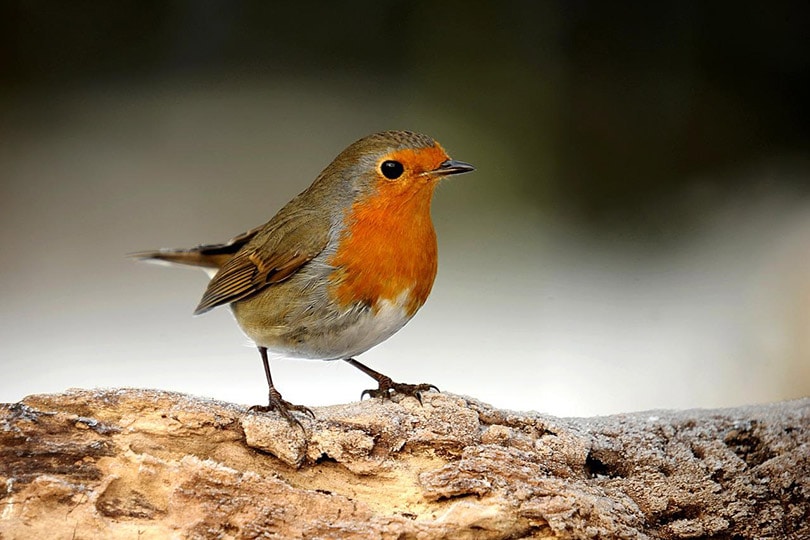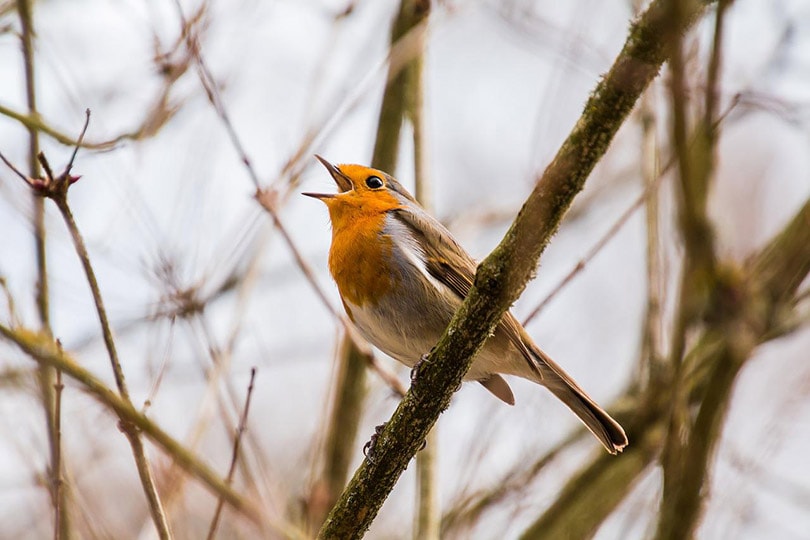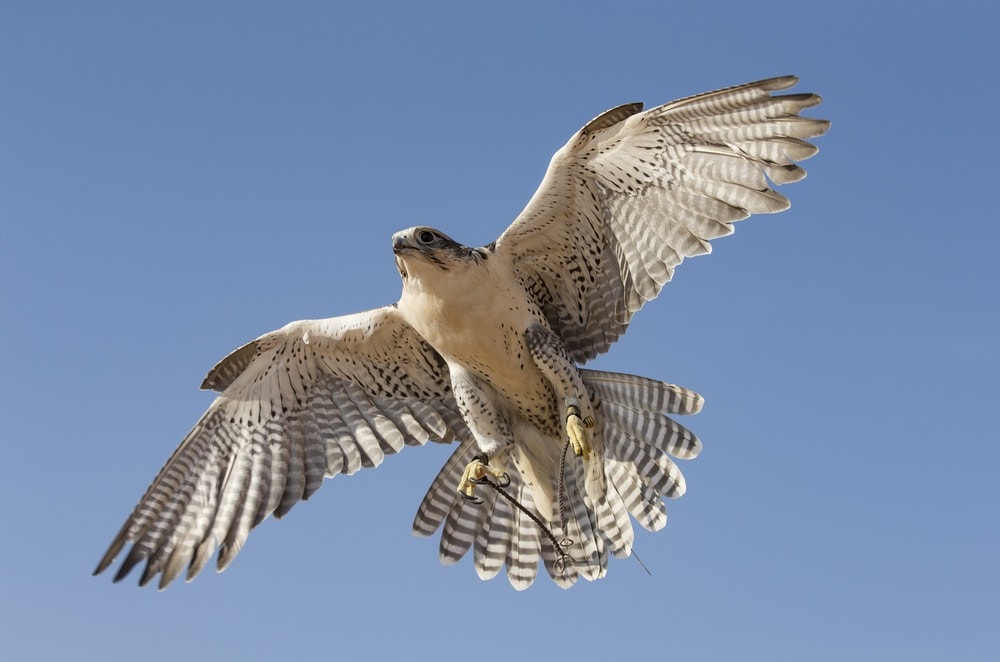How Long Can a Bird Survive Without Food?
Last Updated on

Birds, like all organisms, need food and water to survive, but some species are better adapted to going several days without food. Most species that visit backyard feeders and pet birds cannot live longer than 2 or 3 days without food. However, extreme temperatures, low body fat, and poor health can reduce the time it can survive. Larger birds typically last longer without food, but birds with higher metabolic rates like parakeets struggle to go more than a day or two without food. We’ll examine some of the unique adaptations that allow some species to survive longer without sustenance.

Avian Adaptations To Survive Longer Without Food
When the temperature drops, birds that do not migrate south have more trouble finding food when the insect and plant populations dwindle. They also risk hyperthermia when the temperature drops below freezing, but birds can conserve their energy and stay warm by roosting. By huddling together in large groups, birds can regulate their internal temperature, reduce the threat from predators, and gain tips for the best foraging spots. Roosting is common among non-migratory species, but some birds do not have the same evolutionary advantages to avoid starvation as others.

1. Torpor
Some species can enter a restful state, much like hibernation, for hours or weeks. The trait is called torpor and it occurs with species in the Coliiformes, Caprimulgiformes, and Apodiformes orders. Hummingbirds will typically enter torpor at night for a few hours, especially during migration. The rufous mockingbird has an extensive home range that stretches from Mexico to Alaska, but it goes into torpor while resting from its trip to conserve its energy.
When food supplies are low, some birds like pigeons and doves enter a shallow torpor, but the most remarkable example of avian hibernation occurs with the common poorwill. The common poorwill is a nocturnal forager native to North America, and its tiny, brown-speckled body is difficult to see when camouflaged on the ground in a leafy forest. The bird can reduce its temperature from 106° F to 43°F when it enters torpor and can remain that way for several months. When the temperature increases and the insect population returns, the common poorwill wakes up and looks for food.
2. The Crop
All birds have a gizzard for grinding up food, but not all species have a crop. The crop is a muscular compartment located in the bird’s throat and is part of the digestive system. When food is abundant, birds can fatten themselves with extra portions and store some of it in the crop. Vultures can pack their crops so full that you can see the bulge in their throats. Although eagles typically hunt every day, they’ll eat twice as much when they can, so they will not go hungry if food sources are scarce in the coming days. Owls and buttonquail do not have a crop.
3. Desert Adaptations
According to a study published in Bioscience in 2005, ornithologists believe some desert birds have developed physiological adaptations to survive the brutal climate. When the desert lark was studied, scientists discovered that the bird’s metabolic rate was lower than in species of the same family. This means that desert birds require less energy to survive than birds in temperate climates. The desert lark also exhibits a lower rate of water loss in the skin and has smaller clutch sizes than similar birds. Having fewer offspring and conserving food and water are critical advantages for creatures living in arid environments.


Avian Feeding Requirements
The amount that each species needs to consume every day depends on the bird’s size, the caloric content of the food, temperature, and activity level of the bird. Smaller species like songbirds require more calories to survive when the temperature drops below freezing, but each bird eats a separate percentage of its weight in food every day.
For instance, the hummingbird eats 100% of its weight in nectar, sap, or sugar water each day, but it also consumes thousands of tiny insects that increase the percentage even higher. The common raven eats more when the temperature drops, but it typically only consumes 4% of its body weight in warm conditions.
When birds rely on food sources that are not calorie-rich, they have to eat significant quantities to survive. Although a Canadian goose only consumes 10% of its body weight in food, it must eat a half-pound of grass every day. The grass is not as nutritious as insects or fruit.
The Importance of Feeding Wild Birds in the Winter
When the plants bloom and insects start to appear with the arrival of warmer weather, most birds are not dependent on backyard feeders for sustenance. Hummingbirds will appreciate summertime feeders because of their high metabolism, and goldfinches nest longer than other species and enjoy thistle in the summer, but in most cases, you can keep the feeders empty in the warmer months.
In the winter, food sources become scarce in cooler climates. Backyard feeders and birdbaths can supplement a wild bird’s diet that no longer includes fruit or insects. In colder temperatures, a bird’s mortality rate is much higher. Although some species only consume 10% to 15% of their daily diet in the winter on bird feeder seeds, your help can increase their chances for survival—especially during a brutal winter. If you want to give the birds in your yard a boost in fat and protein, you can fill your feeder with black oil sunflower seeds instead of the generic mixes.
When wild birds gather to eat at backyard feeders, they’re vulnerable to nearby predators. Feral cats and other mammals can catch birds easily if the feeders are close to the ground. Placing feeders on 10 to 12-foot pools will keep the winged visitors safe from ground predators, but you can only protect the species that eat ground seeds by erecting a small fence around the perimeter.

- Related Read: How Long Can a Bird Survive Without Water?

Conclusion
Birds with higher metabolisms must eat every day, but some species have unique adaptations to survive with less food. When insectivores cannot rely on bugs for food, they switch to seed for the winter, and if raptors cannot find live prey, they feed on carrion. Natural selection has allowed birds like the common swift to survive in the air without landing to eat and species like the desert lark to conserve energy in harsh environments. Feeding the birds in your yard is helpful, but luckily, birds are skilled at finding food in unusual ways.
Featured Image Credit: susannp4, Pixabay
About the Author Robert Sparks
Robert’s obsession with all things optical started early in life, when his optician father would bring home prototypes for Robert to play with. Nowadays, Robert is dedicated to helping others find the right optics for their needs. His hobbies include astronomy, astrophysics, and model building. Originally from Newark, NJ, he resides in Santa Fe, New Mexico, where the nighttime skies are filled with glittering stars.
Related Articles:
Can You Use Binoculars to Look At Stars? How to Choose the Right Pair
How to Choose Binoculars for Bird Watching: 10 Expert Tips
10 Types of Hummingbirds in Arkansas (With Pictures)
8 Types of Hummingbirds in Nebraska (With Pictures)
5 Types of Hummingbirds in Idaho (With Pictures)
3 Types of Hummingbirds in Mississippi (With Pictures)
8 Types of Hummingbirds in Kansas (With Pictures)
5 Types of Hummingbirds in West Virginia (With Pictures)
